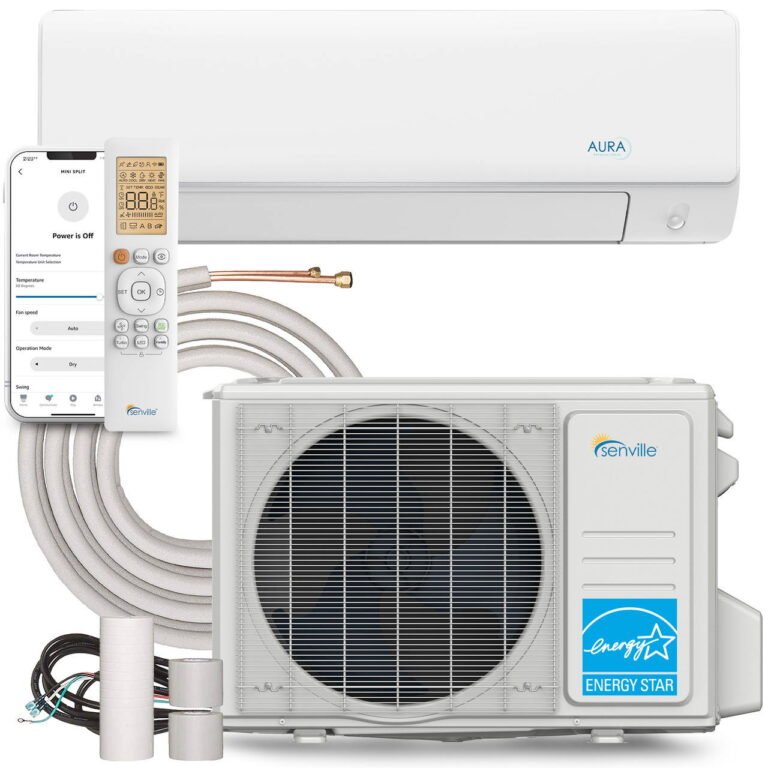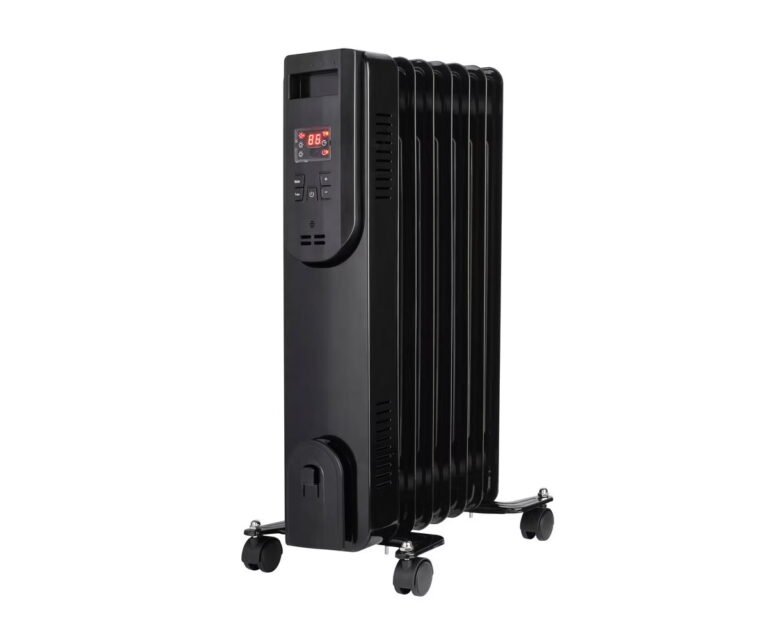How to Heat your Home with Wood Efficiently: 12 Benefits of Wood Heating
Heating your home with wood is easy, safe, and cost-effective.
Wood is the oldest fuel source, used for centuries for home heating and cooking. Even today, with high gas, oil, and electricity prices, many are choosing to return to this renewable resource.
Use this practical guide to learn more about wood heating and its benefits, and see how it can play an important role in your lifestyle.
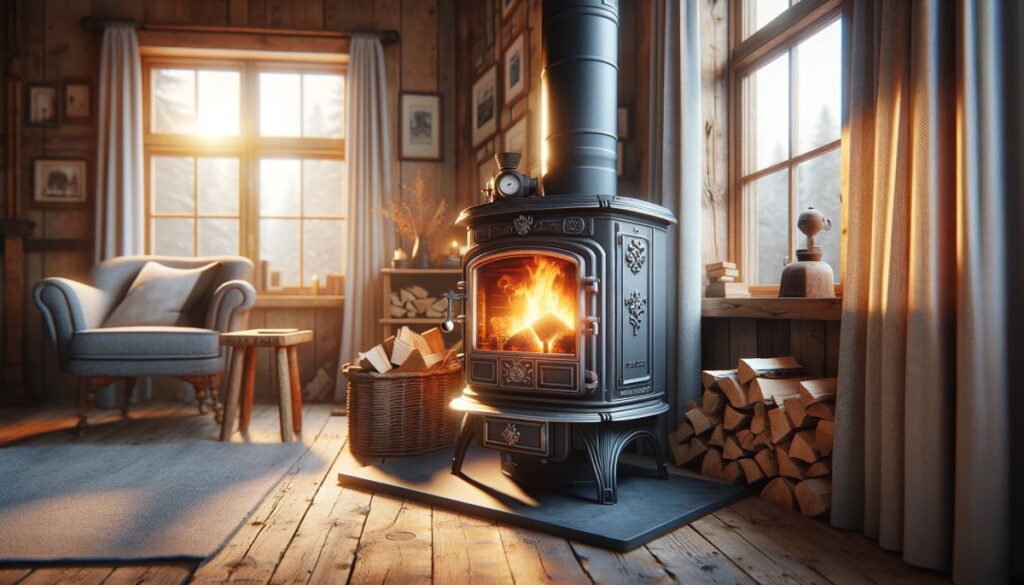
There are many benefits to using wood-burning appliances for home heating, and we will focus on the most important ones.
We will help you understand the differences between wood stoves, fireplaces, and furnaces, including their advantages and disadvantages.
How to Choose the Right Firewood to Burn in Wood Heaters
When buying a wood heater, it’s important to consider various factors, but the type and quality of wood and its environmental impact when burning should be given special attention.
Experts state that “wood is a renewable energy resource that doesn’t contribute to the problem of climate change.”
Is it Cheaper to Heat Your House with Wood?
Heating your home with wood has been a tradition for centuries, serving as a fuel for both heating and cooking. It has long been considered the most affordable heating source, especially with modern high-efficiency models.
Since this fuel source is cheaper than others, such as gas, and because delivering gas pipes to distant places can be expensive, heating on such stoves and heaters can be great alternative. There are often wanted in rural areas where wood is easily accessible, and if you own some, heating becomes free for you and the most reliable source of heat.
And if you live in the city, you know how hard and inconvenient it is to get firewood.
If you want to compare the current energy costs, including firewood, gas, electricity, and oil, use this article or this chart, where you can also enter your own costs to compare.
According to HomeAdvisor.com, firewood prices in the US range between $120 and $660 per cord. For example, oak can cost between $180 and $600, maple from $300 to $450, and ash from $360 to $420.
Use Only Dry Firewood for Efficient and Clean Burning
Using dry firewood is essential for efficient and clean burning. It is ready to be used after being stored for some time (sometimes it takes years) until its moisture content gets below 20%.
For proper storage, stack wood to allow adequate air circulation and cover it at the top to protect it from rain.
Never burn insufficiently dried wood! When it has a high moisture content, its thermal power is reduced because energy is needed to dry the wood and evaporate the water, producing more smoke and condensation.
What is the Best Wood for Heating?
Homeowners often use tree species such as oak, birch, beech, maple, and others in the form of logs, briquettes, and sawdust.
Hardwoods like hickory and ash are the best burning firewood with the highest BTU and longer burn time. They produce more heat, burn clean, and produce less sap.
Softwoods like cedar, pine, and fir are also popular because they are cheaper but tend to burn faster. Firewood with the lowest heating value includes cedar, pine, and spruce.
Some experts recommend mixing different types of firewood for cleaner and more efficient burning. For example, if you use dense hardwood like oak, you might have trouble starting the fire and keeping it burning. Adding a softwood like pine or fir can help solve this problem.
The Worst Firewood for Wood Heating
Avoid firewood that can produce dangerous fumes and smoke and has a lot of sap or resin. Softwood trees with needles rather than leaves should not be used for home heating. When they burn, they tend to create creosote, which sticks to the chimney and becomes a fire hazard.
For example, hemlock trees are tough to split and burn, while aspen and willow trees produce less heat due to their poor quality.
This also includes painted and pressure-treated wood, compressed, and other by-products.
Since the heat content, burning characteristics, and quality vary from one tree type to another, use the information from this table from Utah State University Forestry Extension. This resource provides details such as the percentage of ash produced, how much spark and smoke it generates, the fragrance, and how hard it is to split the firewood.
No matter the type of wood you use, always burn seasoned firewood because it lights easier, burns hotter, and is safer than green or wet wood.
12 Benefits of Wood Heating
If you haven’t decided how to heat your home during winter, we encourage you to consider the following benefits of heating your home with wood.
Efficient Heating
Heating your home with wood is highly effective, as such heaters can warm your room very quickly because they produce a lot of heat. While open-fire appliances such as fireplaces have an efficiency of around 20%, some advanced stoves and pellet heaters can achieve efficiencies as high as 80%. This means you get more heat output for the same amount of wood, making your heating system more effective and economical.
Saves You Money
These systems can save you money, especially if you have access to your own wood supply and can cut it yourself. Even if you need to buy it, it can still be more cost-effective than other heating methods. It is often cheaper than gas, oil, or electricity, especially in rural areas where wood is plentiful. Additionally, using a high-efficiency or pellet stove can further reduce your energy costs.
Eco-Friendly Option
It is environmentally friendly because the fuel comes from renewable and natural sources. As a carbon-neutral fuel, it doesn’t contribute to global warming like fossil fuels do. When it is burned, it releases the same amount of carbon dioxide that it absorbed during its growth, making it a sustainable choice. Additionally, using local wood reduces the carbon footprint associated with transporting fuel over long distances.
Ensures High Heat Quality and Cozy Feeling
Wood burning releases radiant heat, which warms you directly and creates a cozy, comfortable atmosphere. Unlike forced-air systems that can create drafts, a wood stove radiates heat evenly, warming you from all sides. The gentle, radiant heat from a wood fire is often described as more comforting than the heat from other types of heating systems.
Reliable
With wood heating, you are in charge of sourcing and burning your wood. There’s no need to rely on large energy suppliers or worry about unpredictable weather affecting fuel delivery. This ensures you have heat even during the coldest winters. Moreover, it is not affected by power outages, making it a reliable source of heat during emergencies.
No Freezing During an Emergency
Wood heating keeps you prepared in case of an emergency. It can be used for room heating, water heating, and cooking, regardless of gas and electricity availability. This is particularly valuable during power outages or natural disasters when other heating systems may fail. This means you can stay warm and cook food even when the power is out.
Keeps You Active
Sourcing and cutting wood keeps you active. Chopping it with an ax or using a chainsaw is excellent physical exercise, promoting health and fitness. The physical activity involved in gathering and preparing firewood can help you stay fit and healthy, providing a workout that also contributes to your well-being.
Comforting
It generates high-quality heat, enhancing comfort and creating a cozy atmosphere in your home. The crackling sound of a fire, the glow of the flames, and the natural warmth combine to create a relaxing and inviting environment. Many people find the ambiance of a wood fire to be one of its greatest benefits.
Supports Local Businesses
By buying firewood locally, you support your local economy and often get better deals. This helps sustain local businesses and reduces the environmental impact of transporting fuel. Supporting local suppliers also contributes to community resilience and can foster a sense of connection to your local area.
Various Types Available
Wood can serve as your primary heating source or an occasional supplement. You can heat your home with a fireplace, furnace, stove, or wood pellets. The heat can also be used for cooking and water heating. The versatility of these systems means you can choose the option that best fits your needs and preferences, whether it’s a traditional stove or a modern pellet stove.
Stylish
They come in various styles, from traditional and classic to contemporary designs. They add an appealing and elegant touch to any room. A well-designed stove can be a focal point in your home, enhancing its aesthetic appeal while providing practical heating.
Romantic and Nostalgic
Sitting in front of a wood fire with loved ones creates a cozy atmosphere, a soft glow, and a sense of traditional spirit. It’s perfect for making memories and enjoying a romantic setting. The sight and smell can evoke fond memories and a sense of nostalgia, making your home feel more inviting and special.
Disadvantages of Wood Heating
Less Convenient Than Gas or Electric Heating
Wood heating is less convenient compared to gas or electric heating, especially in urban areas. Acquiring, storing, and preparing firewood can be time-consuming and physically demanding. In cities, obtaining wood can also be challenging and expensive.
Risk of Overheating
These stoves can get very hot, posing a risk of burns if touched accidentally. This can be a particular concern for homes with young children or pets.
Difficulty in Temperature Control
Controlling the temperature can be challenging. Unlike gas or electric systems with precise thermostats, they require manual adjustments to regulate heat output.
Physical Effort Required
Handling firewood and removing ash requires physical strength and endurance. This can be a disadvantage for individuals who are not physically capable or who have health issues.
Potential Health Issues
If fumes are not adequately vented and fresh air is not supplied, wood heating can cause breathing issues. Incomplete combustion and poor ventilation can lead to the release of harmful pollutants.
High Maintenance
Such stoves produce a lot of ash, requiring frequent cleaning to maintain efficiency and safety. Regular maintenance of the chimney is also necessary to prevent creosote buildup, which can be a fire hazard.
Limited Flexibility During Winter
During winter, you won’t be able to leave your house for more than a few days without worrying about the heating stopping and water pipes freezing. These stoves need constant attention and refueling, making it difficult to maintain a consistent heat level in your absence.
Popular Options for Heating with Wood
They provide one of the most effective ways to heat your room or house. Wood-burning appliances that directly heat a space are known as space heaters, while whole-house heaters like furnaces use a system of ducts or water pipes to deliver heat to multiple rooms.
The following types can be excellent alternatives to your existing home heating system:
Wood Stoves
If you are looking for a cost-effective, reliable, and environmentally-friendly heat source, consider a wood stove. They are efficient, deliver a lot of clean power, and are visually attractive.
They are primarily designed for space heating but can also be used for cooking. When centrally located, larger models with higher heat output can heat multiple rooms simultaneously, even the whole house.
Such models are typically made of cast iron or steel and feature an enclosed fire chamber where firewood is burned. They use vents and a chimney to expel fumes and gases from the house.
Depending on their design, they can deliver heat through radiation, convection, or both.
Fireplaces
Using a traditional open masonry fireplace is more about the atmosphere and aesthetic appeal than efficient heating. Most of its heat is wasted through the chimney, polluting the air more than other types of heaters. However, if you value the warmth, comfort, and beauty of a natural fire, a wood fireplace is a great choice.
Fireplace Inserts
Fireplace inserts, as the name implies, are cast iron or steel units that fit into an existing fireplace opening. They come with a closed-combustion firebox and a blower system to increase efficiency. They also include a glass door on the front so you can enjoy the sight of the fire. Fireplace inserts are aesthetically pleasing and can be easily customized to use different fuel types.
Wood Furnaces and Boilers
Compared to wood stoves, wood furnaces can distribute heat evenly throughout your home using a network of air ducts and water pipes. These central heating systems are designed to heat not just one room but the entire house and other dwellings. Appliances that heat potable water are called boilers, which use a circulation pump to force water through pipes.
There are two types of furnaces to consider: outdoor and indoor.
Outdoor Wood Furnaces: These are designed with an inner firebox and a water jacket that surrounds it. Water is heated by the fire and then pumped into radiators or heat exchangers via pipes, delivering heat to the entire house. The greatest advantage is that the danger of fire spreading to your home is significantly reduced, and cleaning is easier and less messy. The main disadvantages are lower efficiency (50-60%) and the large amount of smoke produced.
Indoor Wood Furnaces: These are more efficient than outdoor units, delivering more heat and producing less smoke. During cold weather, you don’t have to go outside to load the wood and keep your furnace running. However, they require you to load only small pieces into the chamber, so you need to bring wood often, day and night, to maintain a steady heat level. Both types of furnaces generate a lot of ash, requiring frequent cleaning.
Wood Pellet Stoves
Wood pellet stoves are similar to wood stoves but are much more advanced, utilizing a circuit board, mechanical auger, thermostat, and fans. This innovative design makes them easier to operate and control, as well as more efficient and much cleaner.
They do not use firewood for heating but biofuels such as compressed wood fiber (or pellets). Pellets are typically made from compacted sawdust and wood-related products.
Note that all wood-burning heaters must be EPA (Environmental Protection Agency) certified and meet emission standards. This ensures they operate efficiently and produce minimal pollution.
Is Burning Wood for Home Heating Bad for the Environment?
According to the Government of Canada, wood burning can harm your health unless you take steps to mitigate the risks. The smoke contains pollutants such as nitrogen oxides, smog-related particles, carbon monoxide, chlorinated dioxins, and other toxic compounds.
Here’s how you can reduce the environmental and health impact:
- Choose a Low-Emission Model: Look for devices with a certification sticker from the EPA (Environmental Protection Agency), indicating low emissions.
- Professional Installation and Maintenance: Ensure your unit is installed and maintained by a professional to guarantee safe and efficient operation.
- Regular Chimney Cleaning: Clean your chimney regularly to prevent creosote buildup, which can cause chimney fires and reduce the stove’s efficiency.
- Proper Venting and Air Intake: Make sure your stove has proper venting and sufficient air intake to promote complete combustion.
- Avoid Overloading: Do not overload the burner, as this can lead to incomplete combustion and increased smoke production.
- Use Dry, Seasoned Wood: Burn only dry and seasoned wood to reduce smoke and increase efficiency. Moist products produces more smoke and pollutants.
- Smart Burning Practices: Avoid burning materials such as plastic, painted and treated wood, and garbage. These can release harmful chemicals and increase pollution.
- Safety Measures: Install carbon monoxide detectors and smoke alarms, and keep a fire extinguisher nearby to ensure safety in case of emergencies.
- Efficient Burning: If you notice smoldering and smoky fires, it indicates that the wood is not burning properly, which reduces efficiency and air quality. Adjust your burning practices to achieve cleaner burns.
Burning wood for heat does not increase your carbon footprint because it releases almost the same amount of carbon whether it is burned or naturally decays. Therefore, wood is considered an environmentally friendly and carbon-neutral source of energy when burned correctly.
By following these guidelines, you can enjoy the benefits of wood heating while minimizing its impact on the environment and your health.
Conclusion
With the winter just around the corner, rising costs of gas and electricity, and supply concerns, heating your home with wood might be the solution you are looking for.
Wood is an excellent source of heat for water and home heating, available to many for an affordable price.
As explained before, homeowners like wood heating because it is economical and reliable in case of emergency and energy supply disruptions; it reduces the carbon footprint and provides a cozy and warm atmosphere to spend with your family and friends.
And with the availability of many styles and sizes, you can be confident that wood burners will look lovely in any room, whether in use or not.
More Articles About Home Heating
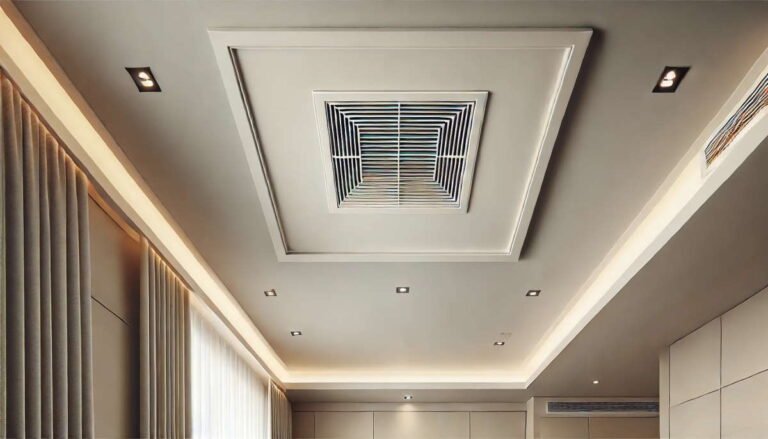
Tips and Tricks on How To Remove Bad Smell From The Air Ducts
The bad smell from the air ducts of your HVAC system is a common problem for many homeowners. Ductwork is the…
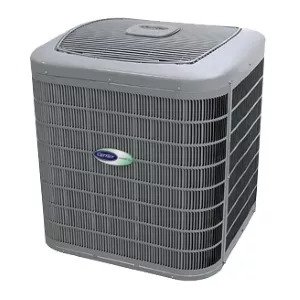
Heat Pump Not Cooling? Here’s What You Need to Know
Heat pumps are essential not only in the winter for heating our homes but also in the summer to cool…

Compare Ductless Mini-Split Heat Pumps vs. Window Heat Pumps: Which Is Right for You?
In this article, we are going to look at ductless mini-split heat pumps vs. window heat pumps, examine how each…

